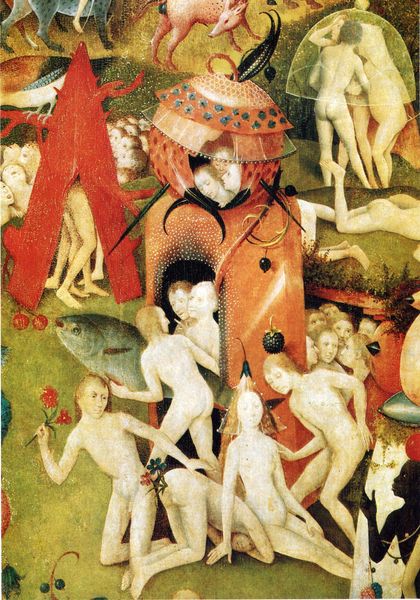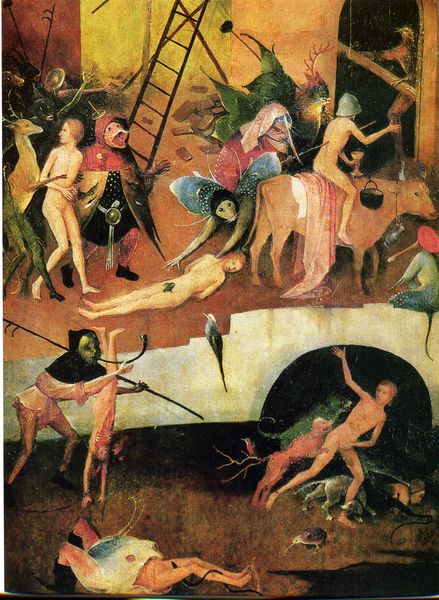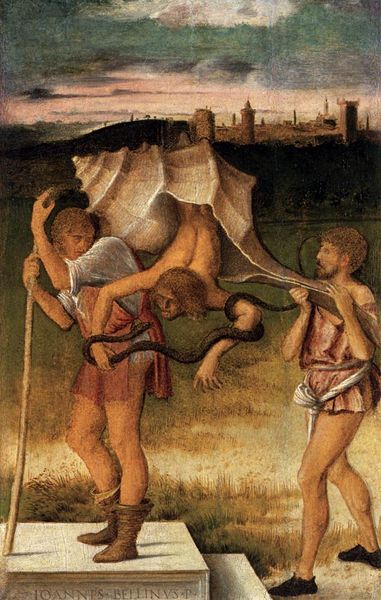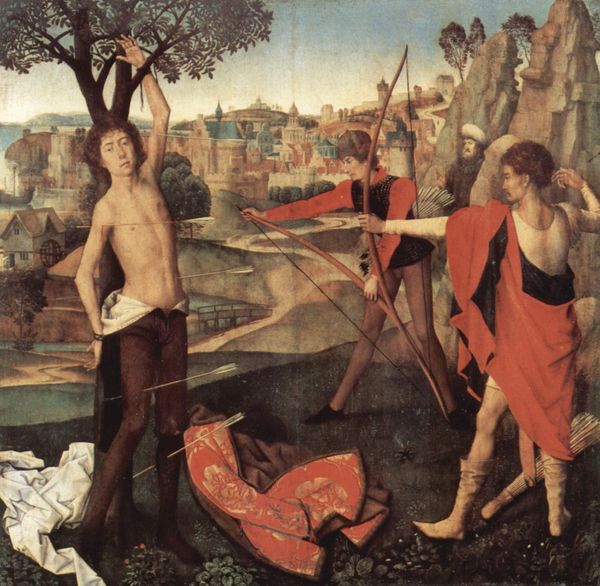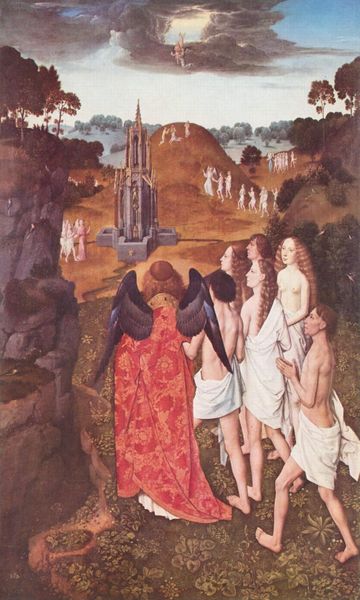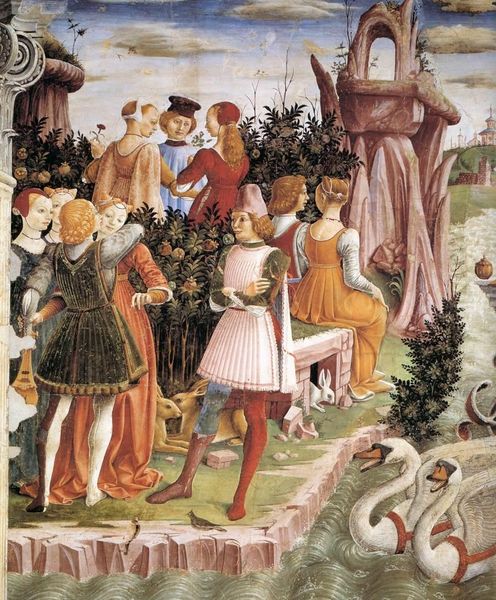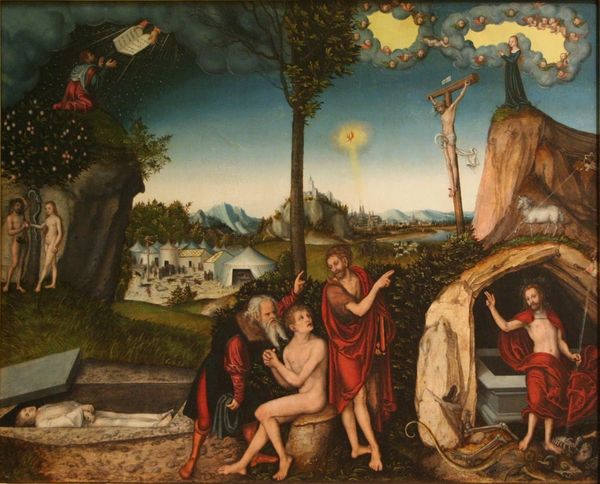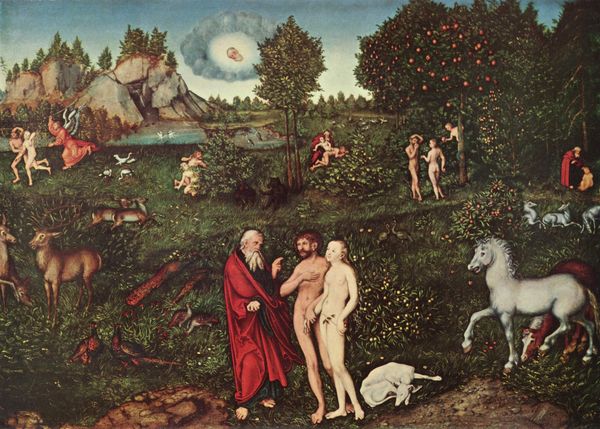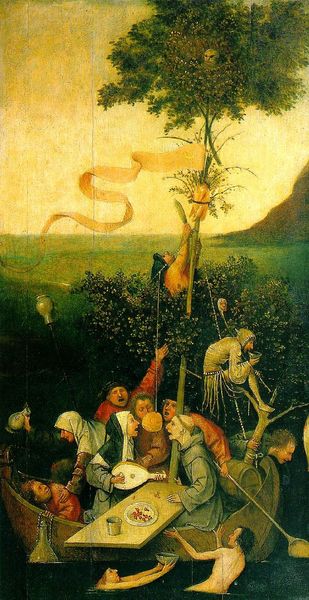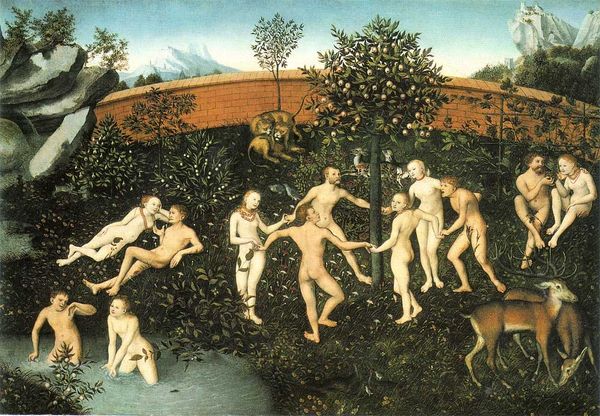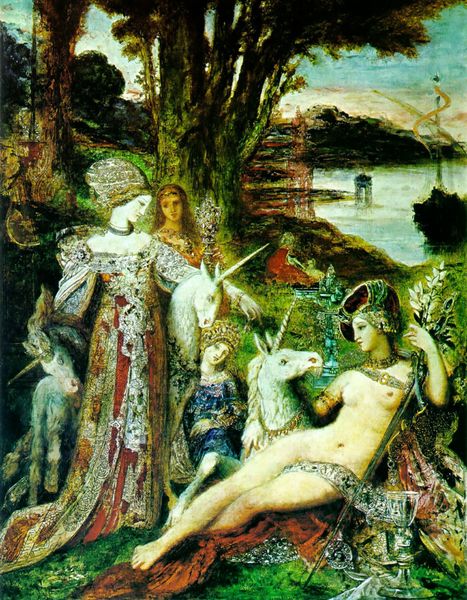
oil-paint
#
allegory
#
oil-paint
#
landscape
#
figuration
#
christianity
#
northern-renaissance
#
christ
Copyright: Public domain
Curator: Bosch’s “Haywain," painted around 1516, offers an utterly compelling, if disturbing, vision. Look at how Bosch articulates the world in oil paints. What’s your immediate take on it? Editor: Well, its mood strikes me first. There is something so ethereal yet menacing about the way he has structured the pictorial space, creating different narrative layers, filled with a sense of impending doom. The unsettling strangeness is also captivating, drawing you into its uncanny world. Curator: Let’s consider the making of this world. Bosch was a master of allegory; this painting operates as a fierce critique of human folly. We see the narrative structure emphasizing themes of sin, temptation, and ultimate damnation across an extensive earthly plain. Look at the figures laboring and indulging—each contributing to a collective downfall depicted across triptych panels, with hell waiting. Editor: Yes, the symbolism! You can certainly recognize Bosch's creative deployment of the traditional language, which is revealed in the compositional tension between divine figures and the human figures and beasts cavorting below. Take the elongated figures, their attenuated limbs; their gestures echo Mannerist elegance while amplifying emotional distress. Curator: What I see is a reflection on earthly desires. Each brushstroke becomes a meditation on human behavior in relation to materials: food, status, all manner of things, with a stark class critique—who has and who has not. How might this canvas also speak to the very process of its creation, mirroring in oil the themes it so gravely depicts? What does it say about art's role in reflecting or influencing these behaviours? Editor: I tend to perceive the Haywain detail less as social commentary and more as psychological landscape. Consider its color theory, where the interplay between the bright, almost lurid colors and darker shadows evokes turmoil. Perhaps this is intended less as literal documentation and more as symbolic representation about what drives the artist to translate onto the canvas through artistic process. Curator: Maybe you’re right, although that is an idealist view. But if one were to consider both, surely our perception can expand and appreciate the capacity of art in historical discourse and beyond. Editor: Indeed. I leave this artwork reflecting on my initial thoughts but with more nuanced observations. Thanks to that exchange.
Comments
No comments
Be the first to comment and join the conversation on the ultimate creative platform.
